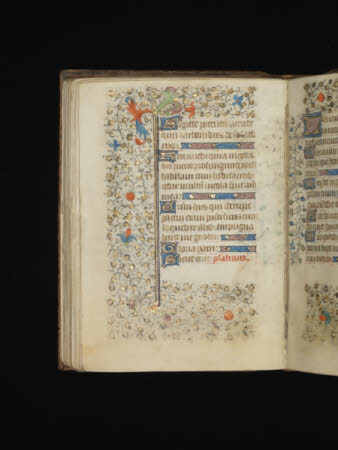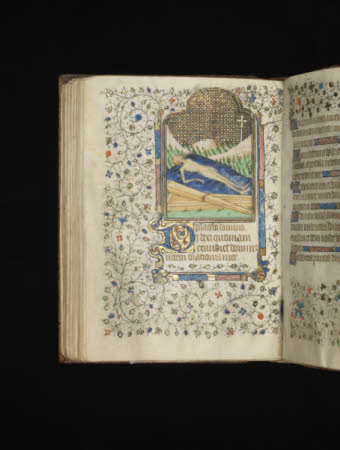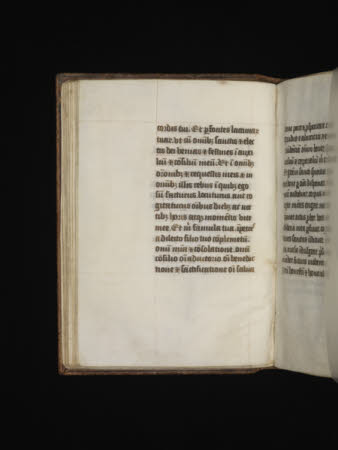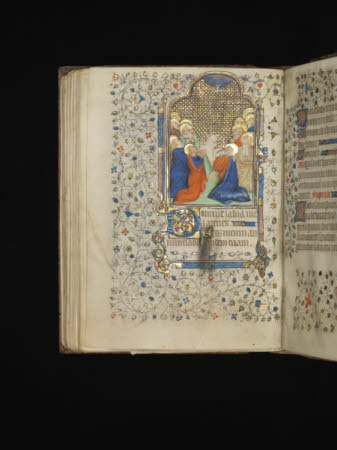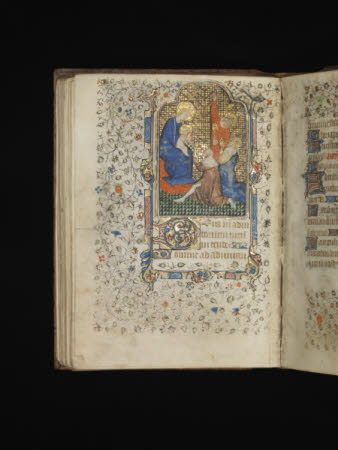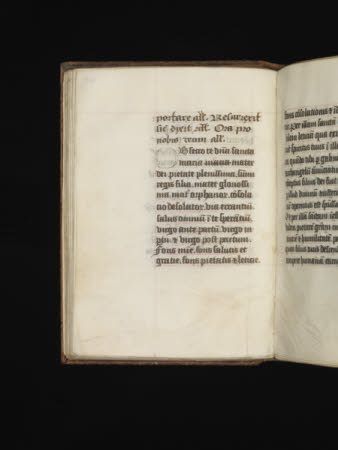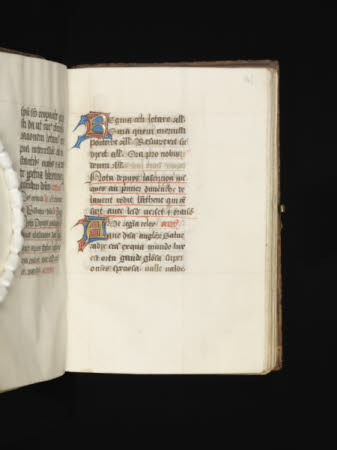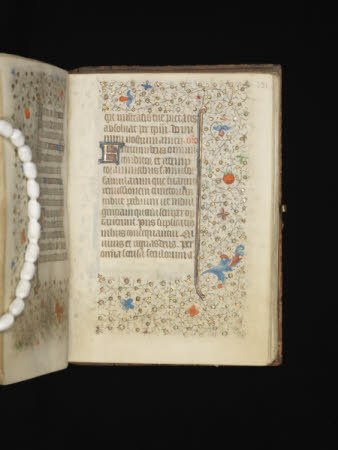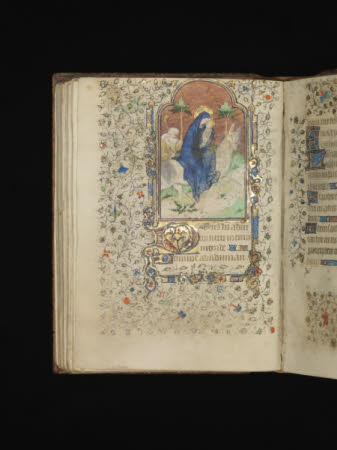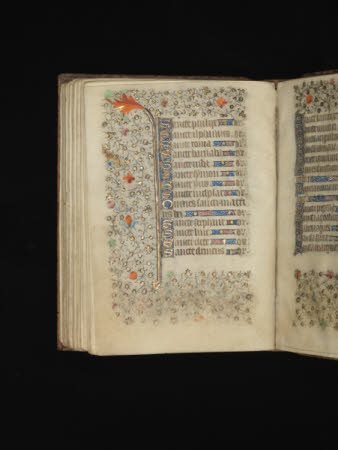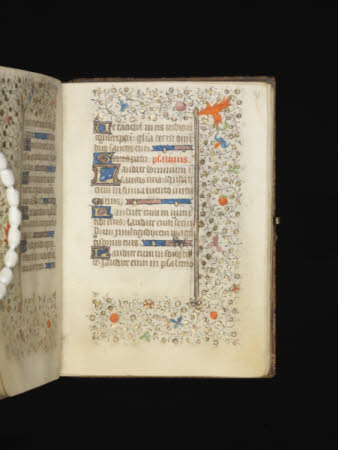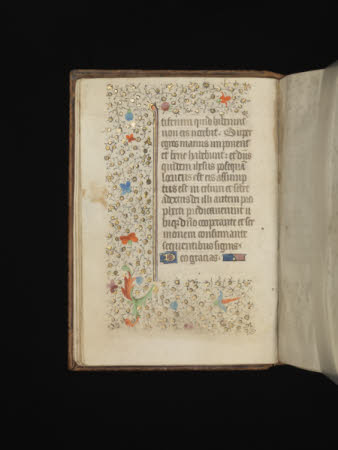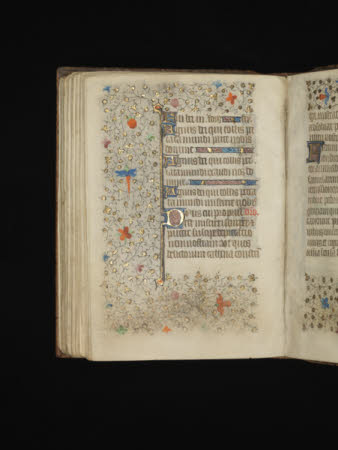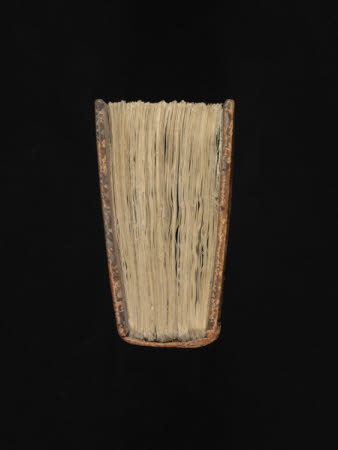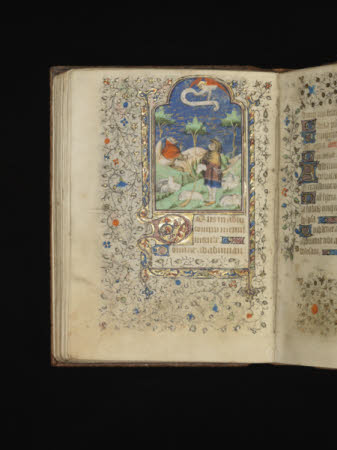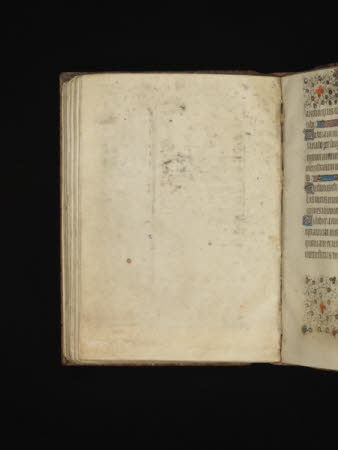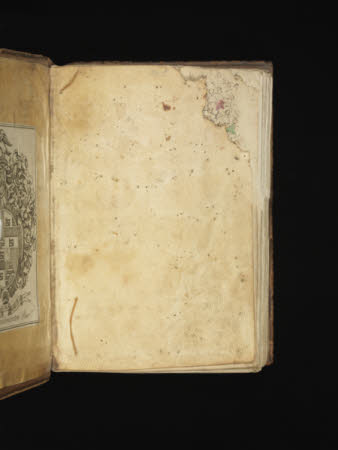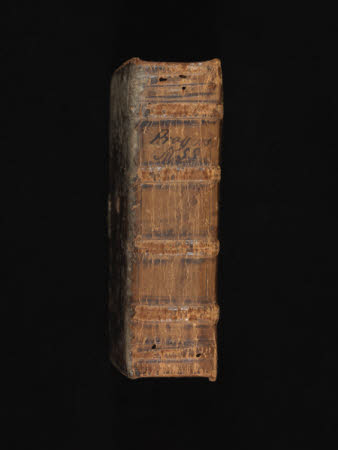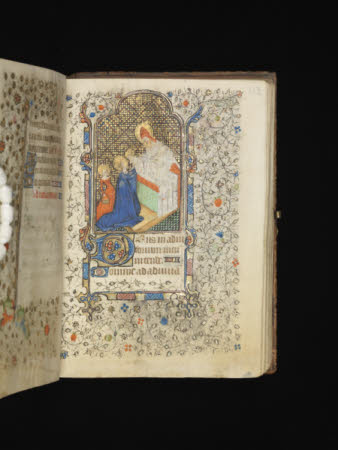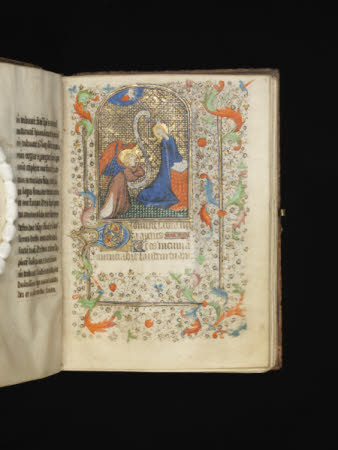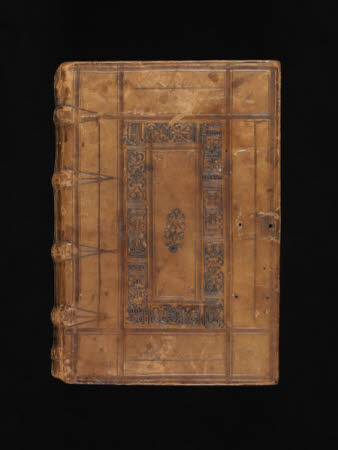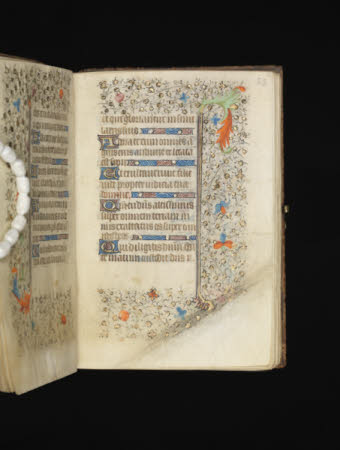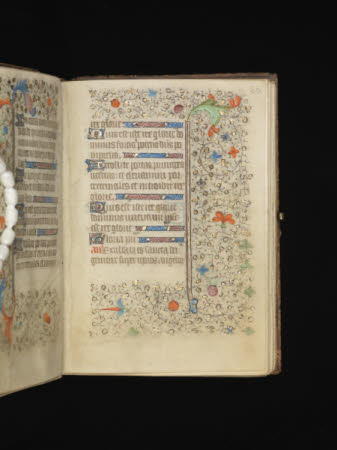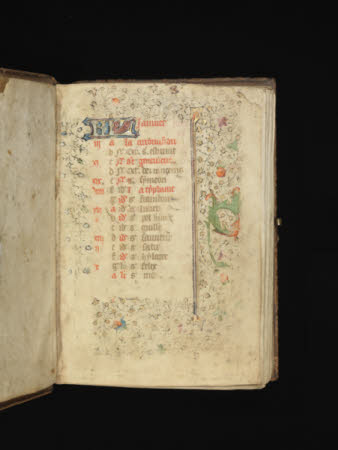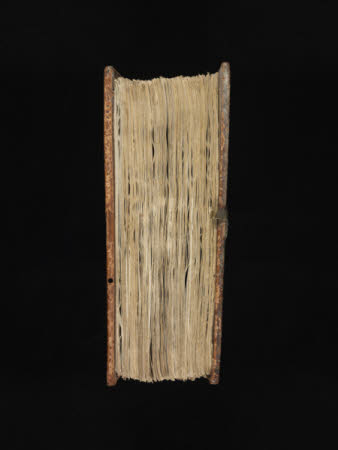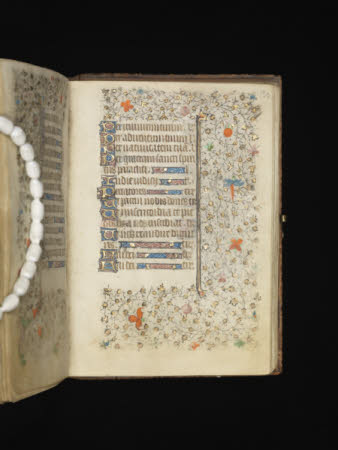[Composite Book of Hours. Horae ad usum Parisiensem. Horae ad usum Romae].
Roman Catholic Church
Category
Manuscripts and documents
Date
c. 1420 - c. 1475
Materials
Measurements
177 x 128 x 65 mm
Place of origin
Paris
Order this imageCollection
Coughton Court, Warwickshire
NT 3081799
Summary
Manuscript composite Book of Hours, the earlier section an Hours for Use of Paris, the later an Hours for Use of Rome, possibly produced for someone associated with or devoted to the mendicant orders. Material from the later Hours for Use of Rome is interpolated as follows: fols. 21r-49v (Abbreviated Hours of the Virgin, Use of Rome), fols. 49v-52v (Obsecro te), fols 220r-235r (Litany). Material from the later Hours for Use of Rome is interpolated as follows: fols. 21r-49v (Abbreviated Hours of the Virgin, Use of Rome), fols. 49v-52v (Obsecro te), fols 220r-235r (Litany). 500 - - $aHands: (1) fols. 1r-12v: good quality Gothis textualis with rounded aspect; (2) fols 13r-19v: squarer Gothic hand with some accentuated seriphs; (3) fols. 53r-124v and 133r-203v: as hand (2) but a paler ink with a rounder less elongated aspect; (4) fols. 125r-131r and 204r-219v: a rounder hand with thick strokes; (5) fols. 21r-49v and 220r-235v [from Use of Rome Hours]: later hand; (6) fols. 49v-52v [from Use of Rome Hours]: Gothic hand with very barbed ascenders and descenders. Each hand adds its own rubrics in red. Illustration: (A) in original Use of Paris Hours: (i) Miniatures: fol. 53r (Annunciation); fol. 81v (Visitation); fol. 96r (Nativity); fol. 103v (Annunciation to shepherds); fol. 108v (Adoration of Magi); fol. 113r (Presentation in the Temple); fol. 117v. (Flight into Egypt); fol. 126v (border and intial but miniature for Compline not executed); a further miniature for the Pennitential Psalms has been excised from between fols. 132-133; fol. 151v (Crucifixion); fol. 156v (Pentecost); fol. 161v (Burial). The style and intensity of these illuminations mark them out as the work of the Rohan Master. (ii) Borders: Type 1: used throughout Paris Hours.staves and decoration in the upper, lower and outer margins to form a three quarter frame around outer edges of text block. Staves of pink and gold strips, outlined in blck with acanthus finial in colours. Type 2: on all rectos of Calendar, sporadically thereafter: hairline tendrils with ivy leaf, flowers etc. (iii) Initials: Major: thoughout Paris Hours for new text, signalled by gold letter, 2ll high; minor: main sections of texts 2 ll initial. (B) in Use of Rome Hours: no illuminations or borders but one form of initial, differentiated by line height only, is used to mark all text divisions. Collation: I12, II-XVI8, XVII8[1 excised, stub still visible], XVIII-XXIX8. Quire markings run uninterrupted through the ms. from a-z then aa-ee, suggesting that these were added to assist in the order of the quires when the later Hours were inserted. The earlier scribes of the Use of Paris Hours use horizontal catchwords, whilst the scribes of the later Use of Rome Hours (quires III-VI, marked b-e, and quires XXVIII-XXIX, marked dd-ee) use catchwords written vertically along the bounder of the inner margin.
Full description
Orientation: Text Substrate: calf vellum with some stitched flayholes and contemporary repairs (eg f.59) - noticeably finer and whiter skins used for section of gospels in French without border ff.21-52. Ink/Pigment: Text in brown ink. Initial letters gilded on gesso with red, blue and white painted decoration. All leaves (except 20-52 and 220 to 235) have floral borders with gilt ivy leaves over gesso and painted leaves in orange, blue, green and pink. 10 half-page miniaturesType: BOUND BOOK Binding Type: Inboard binding, raised supportsDate of Binding: mid-16th centBinder's Name: English End Leaves: Sewn single bifolium of goat parchment, outer leaf pasted to board (from an earlier binding?). The front flyleaf is perforated with many holes and has a double length of thread laced between two of them in the bottom inner corner. Structure: EnglishEdges: Plain cut, gilded and polished Spine Lining: slight round, angled joints, no evidence of liningsEnd Bands: none. Thread marks of endband sewing from earlier binding visible.Bookmark: NoneBoards: 5mm beech(?) wood boards with slight external perimeter cushion and internal chamfer.Covering: Brown tanned calf, lapped corners (fe over). Tooling Spine: blind tooled thin/thick/thin fillet at head and tail of panels with single fillet at sides; panel 1 with cording above and below kettle band, panel 5 with cording outside kettle band onlyTooling Sides: blind tooled thin/thick/thin fillet double border with roll bearing the initals GK inside the inner border and central fleuron; cording darts on all supports; blind tooled single fillet on board edges. Furniture: Single hook and bar type copper alloy catchplate in centre of foredge of back board. Scar from hinge plate attachment on front board, with what appears to be the outline of a catchplate in lower half of foredge. The back pastedown has marks of 2 original sidepins, the foredge of the front pastedown has nail holes from strap attachments. Enclosure: None Binding Notes: The foredge can and should be compressed to same thickness as spine for wrapping and transport. Height required for safe display: 110mm. The GK roll is no.XII [MW.a(1)] in Pearson/Ker, and has a complicated history, and was used by more than one binder 1550-1621.
Bibliographic description
i,235 leaves . 165x113mm.. Use of Paris Hours made in Rohan workshop in Paris c.1420?. Provenance: Armorial bookplate: Sr. Robt. Throckmorton Bart.. Binding: Sixteenth-century clasped Oxford binding, with initials G.K.; front flyleaf shows signs of original sewing threads at top and bottom; upper parts of clasps missing.
Makers and roles
Roman Catholic Church




